Spaced teeth
- Home
- Spaced teeth
Conheça nossos casos de sucesso com nossas soluções:
Treatment
Agenesis
Dental agenesis is a congenital abnormality (which occurs before birth) where one or more teeth do not develop. Composite is a very conservative option, especially for younger patients, as it can provide harmony to their smile. Should the patient desire orthodontic treatment or implants in the future, the composite can simply be removed as no drilling was done and the teeth are intact.

Before
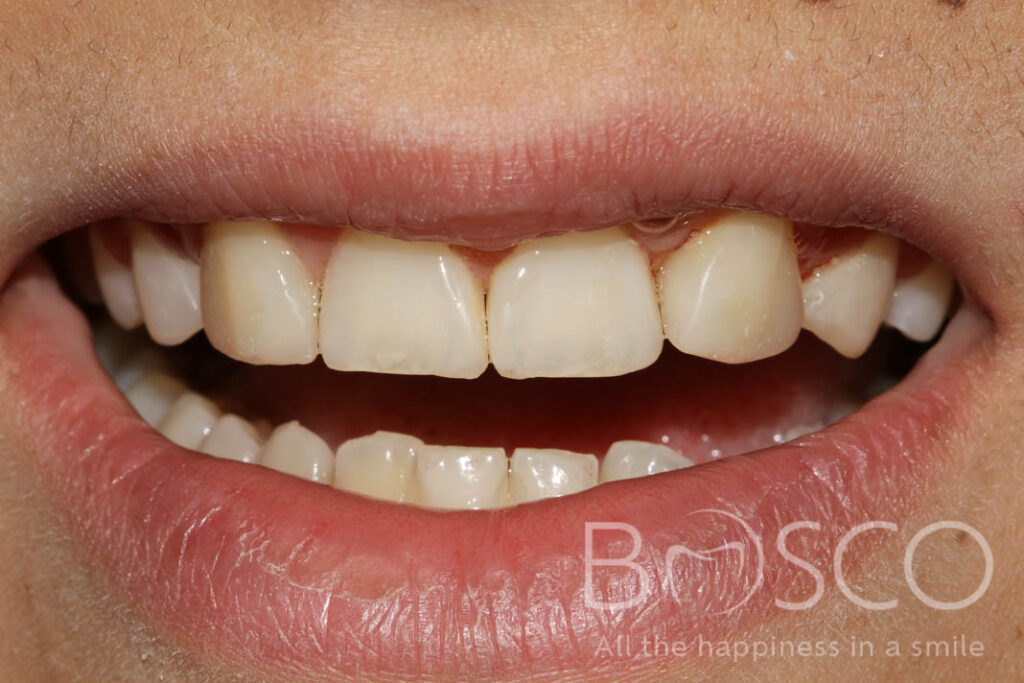
After
Case 1
Both of the upper lateral incisors were missing in this young teenager. In that moment, the family opted for treatment with composite as it is a reversible and conservative option.
In this case, composite bonding was done with the aim of closing the gaps and masking the pointy canines by making them more rectangular and simulating the shape of the missing lateral incisors.

Before
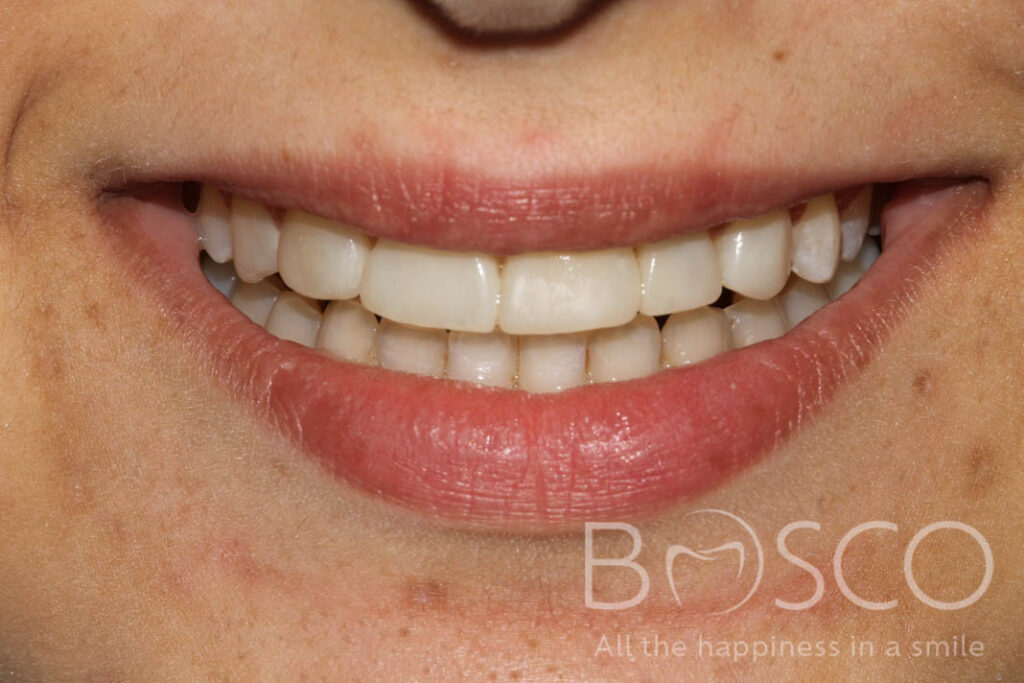
After
Case 2
This young teenager presented with agenesis of the right lateral incisor, and her left lateral incisor was cone-shaped (also known as a peg tooth).
The left central incisor had a composite filling done due to a fracture. The family opted for treatment with composite veneers of the front six teeth.
Case 2
This young teenager presented with agenesis of the right lateral incisor, and her left lateral incisor was cone-shaped (also known as a peg tooth).
The left central incisor had a composite filling done due to a fracture. The family opted for treatment with composite veneers of the front six teeth.

Before

After
Treatment
Diastema Treated With Composite Bonding
Diastemas are gaps between teeth that can be closed or reduced with composite. When teeth have the appropriate length, the composite can be added just in between both teeth with the objective of closing or reducing the space between them.

Before
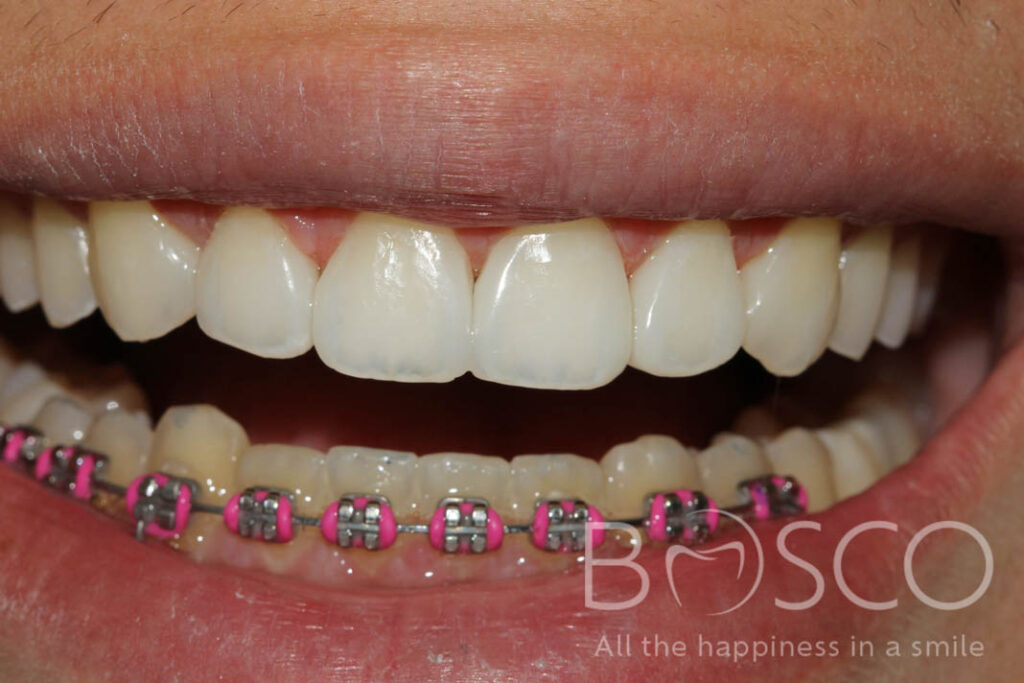
After
Case 1
Patient presented with gaps between all the upper teeth. Since they were all of normal length, it was only necessary to fill in the gaps with composite bonding in between the teeth.
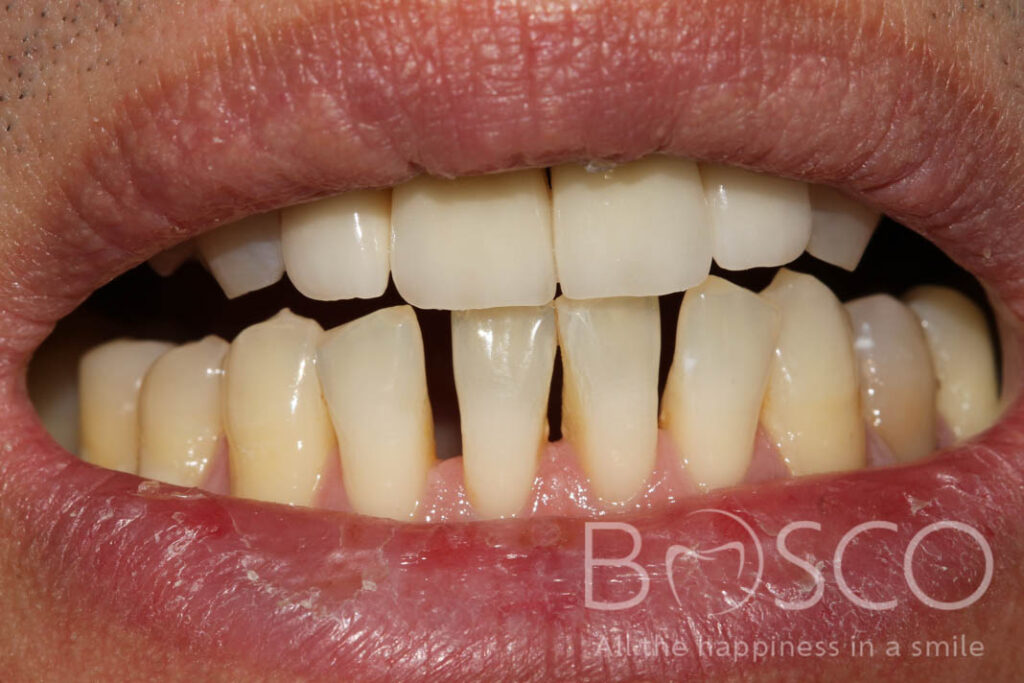
Before
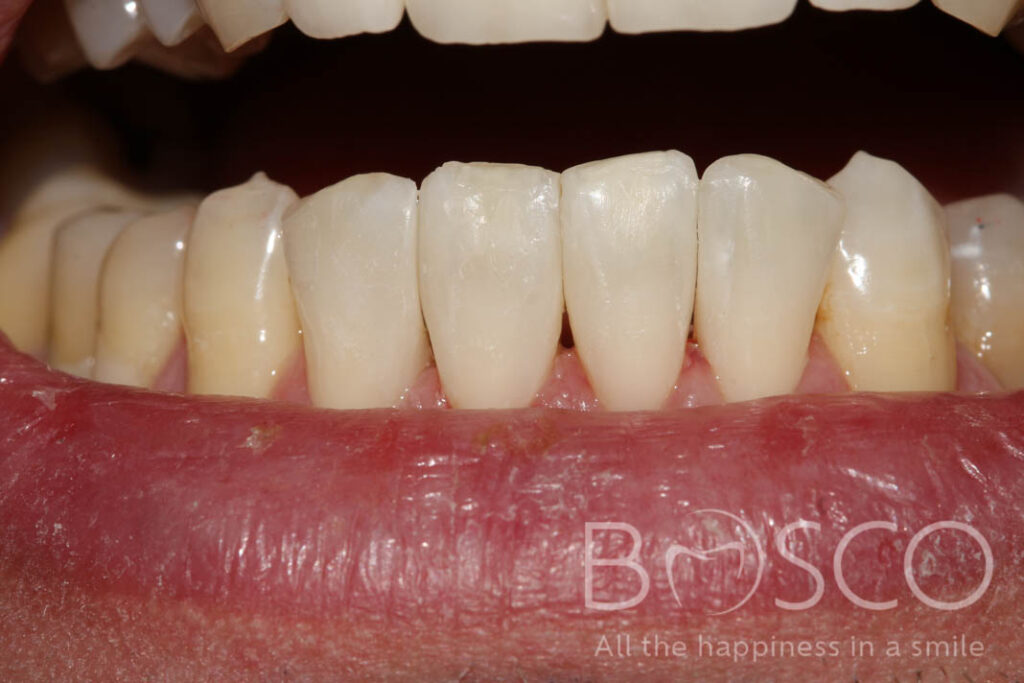
After
Case 2
In this case, composite bonding was done to the lower teeth. Patient presented with gaps between the lower teeth. In this case, composite bonding was done to the lower teeth.
Case 2
Patient presented with gaps between the lower teeth. In this case, composite bonding was done to the lower teeth.

Before

After

Before

After
Case 3
Patient presented with a small gap between the lateral incisor and the canine that was bothersome. This gap was closed with composite bonding and without any drilling to the teeth.
Treatment
Diastema Treated With Veneers
When teeth with gaps also present with some alterations to the shape, size and colour, an alternative is to correct these with the use of composite veneers. This is when the entire frontal surface of the tooth is covered with composite, which improves the aesthetic look and corrects the imperfections described above.

Before

After
Case 1
In cases where it is necessary to increase both the length and the width of teeth, veneers are highly recommended. This is where the tooth is entirely encased in the restorative material, which can be porcelain or composite. This patient opted for eight composite veneers without any drilling.
Treatment
Diastema on Posterior Teeth
When gaps between posterior teeth are not large enough for implants or dental bridges, an alternative to orthodontic treatment is to close or reduce this undesired space with composite bonding
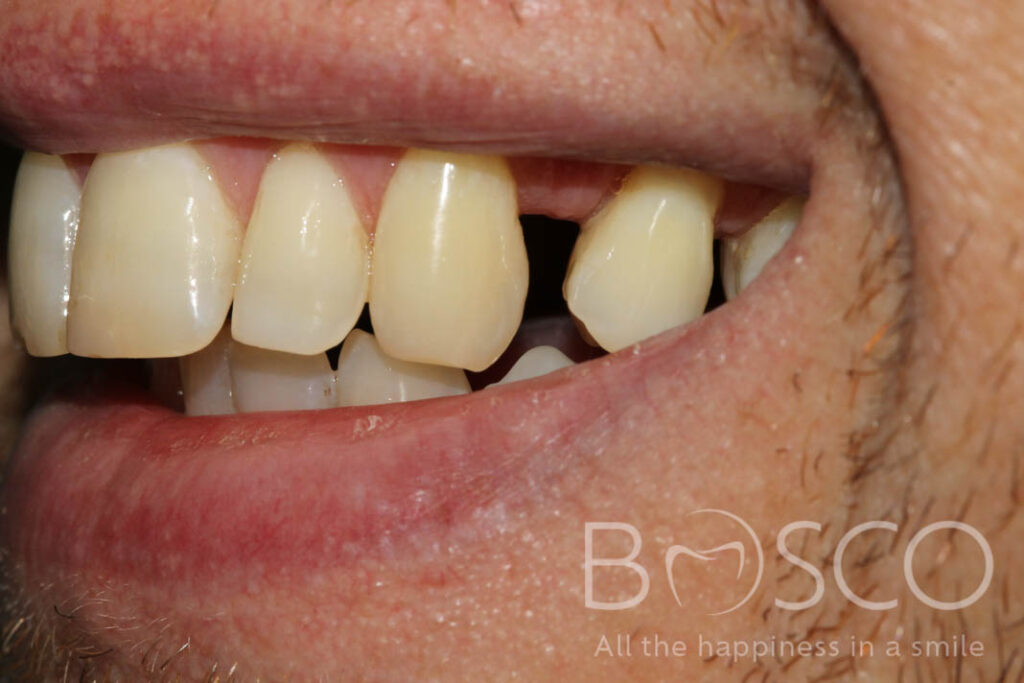
Before
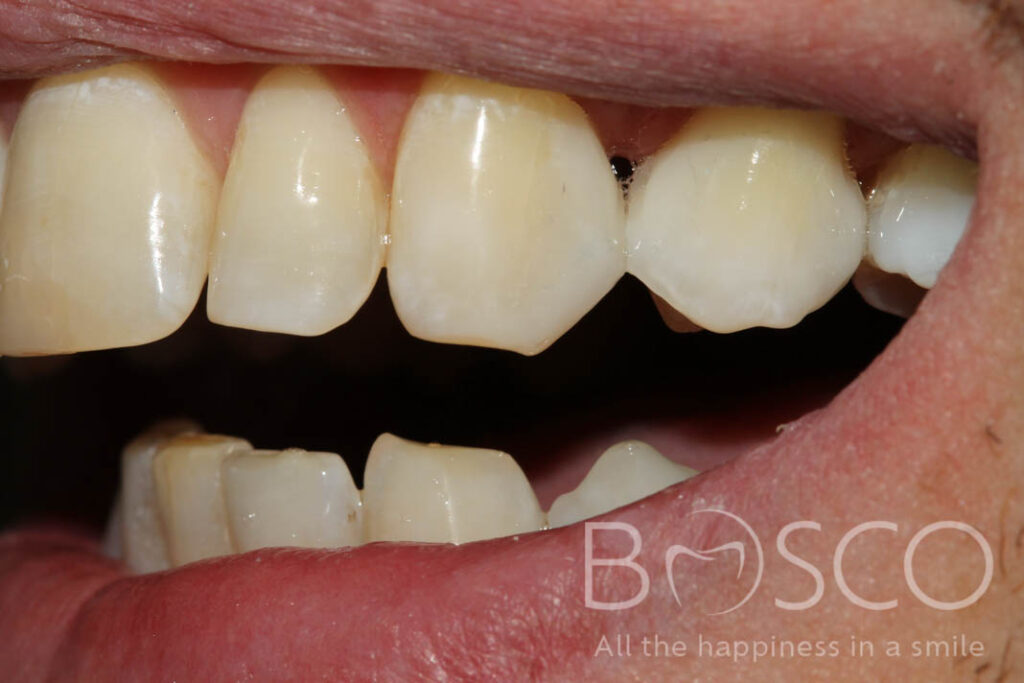
After
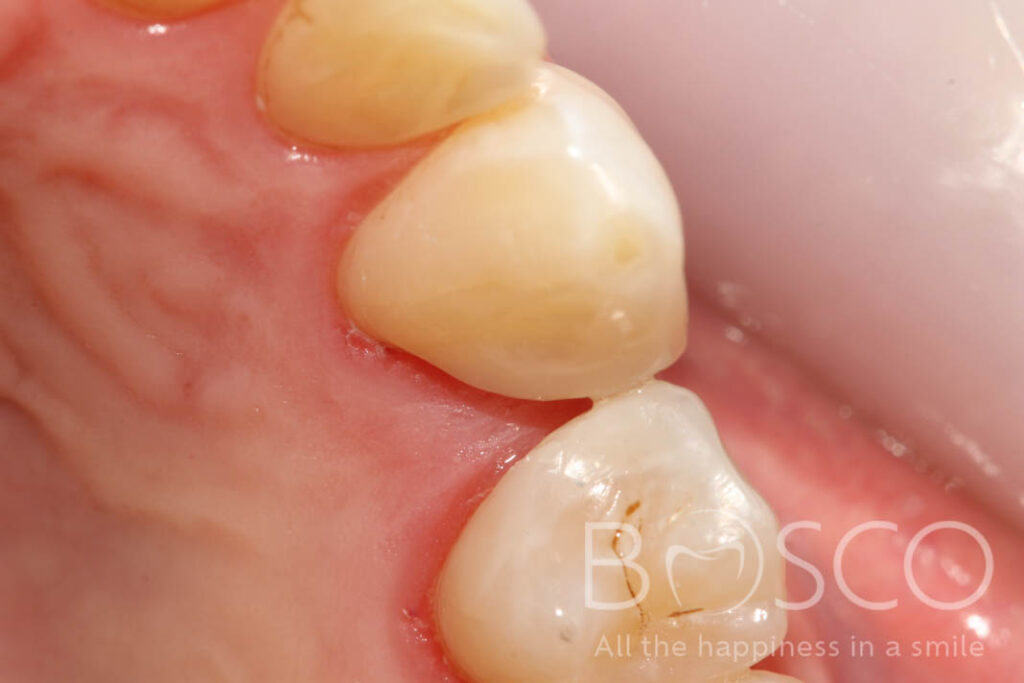

Case 1
Patient reported using orthodontic braces for many years, yet the gaps between his upper teeth on both the left and right sides had not closed.
In that moment, the patient was not interested in any sort of orthodontic treatment. The option suggested and subsequently accepted by the patient was to close these gaps with composite.
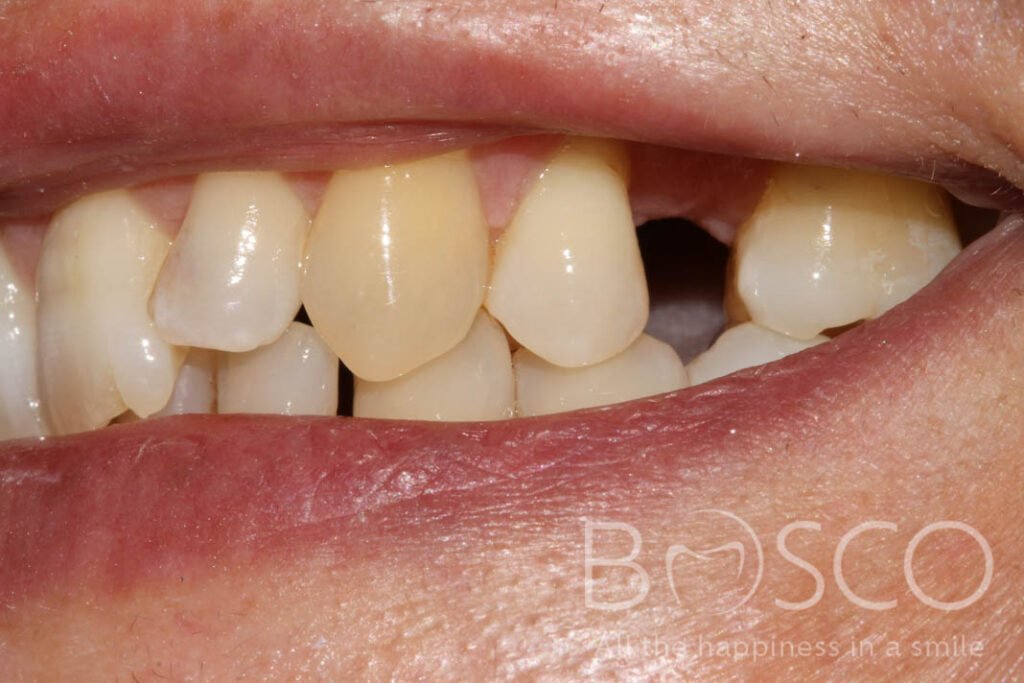
Before

After
Case 2
In this case, the patient had her second premolar extracted many years ago, and, over time, the first molar has shifted towards the front. The space was not large enough for an implant. In that moment, the patient was not interested in orthodontic treatment or in drilling her teeth for a fixed dental bridge.
The suggested alternative that the patient agreed to was to reduce the space with composite bonding. Some composite bonding was also done to the front teeth.
Case 2
In this case, the patient had her second premolar extracted many years ago, and, over time, the first molar has shifted towards the front. The space was not large enough for an implant. In that moment, the patient was not interested in orthodontic treatment or in drilling her teeth for a fixed dental bridge.
The suggested alternative that the patient agreed to was to reduce the space with composite bonding. Some composite bonding was also done to the front teeth.

Before

After
Treatment
Incisal angle
This term also describes a gap between teeth but differs from a diastema in that it refers to a small space between the edges of the teeth.

Before

After
Case 1
Patient was bothered with the gaps, the shapes and the misalignment of her teeth. She opted for composite bonding with no drilling. In one sitting, it was possible to close the gaps, give a new shape to her smile and disguise the protruding lateral incisors.
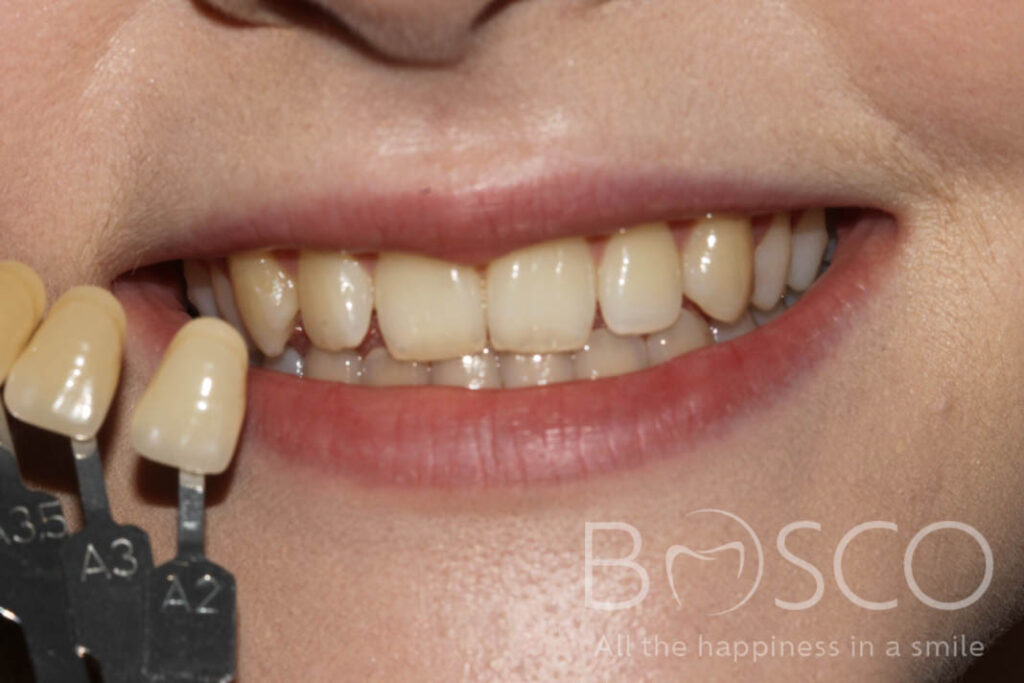
Before
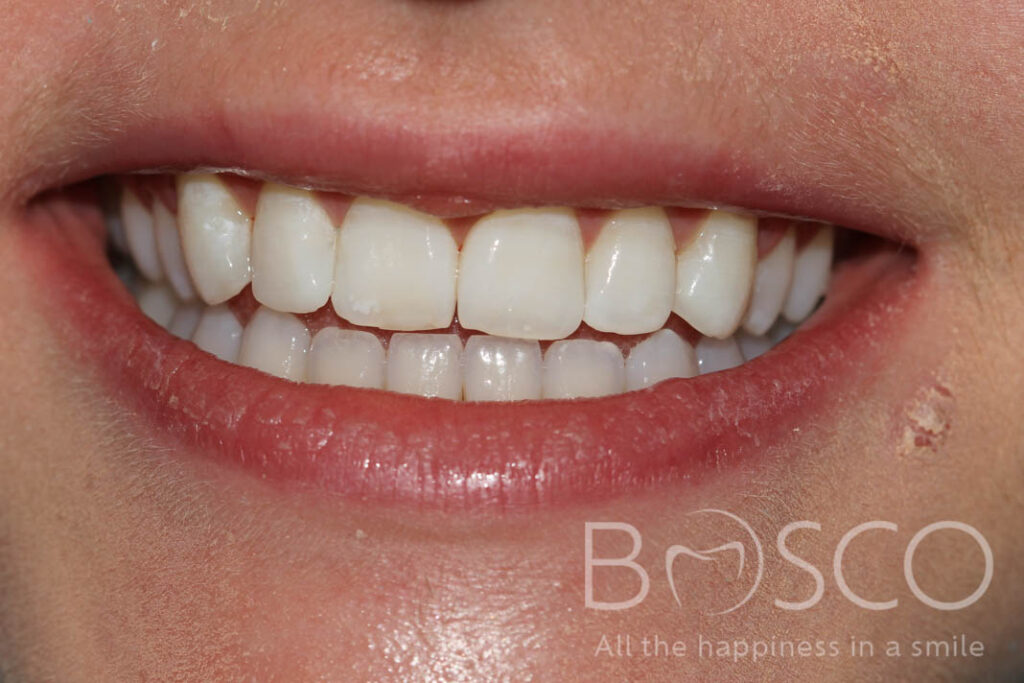
After
Case 2
A young lady presented with very yellow teeth and was unhappy with their shape. The patient opted for whitening and composite bonding applied to specific areas of the teeth in a very conservative manner. At the end of treatment, patient was happy and objectives were achieved.
Case 2
A young lady presented with very yellow teeth and was unhappy with their shape. The patient opted for whitening and composite bonding applied to specific areas of the teeth in a very conservative manner. At the end of treatment, patient was happy and objectives were achieved.

Before

After
Treatment
Black Triangle
Black triangles are spaces that appear between teeth near to the gum. There are many reasons for this and depending on the height of your smile it can be the cause of an aesthetic concern.

Before

After

Before

After
Case 1
Patient was very bothered with the gaps between her teeth. Composite bonding was done without any drilling to fill the gaps and improve their appearance. In these cases, absolute isolation with a rubber dam is very important in order to keep a dry field of work and avoid excess amounts of composite next to the gum.

